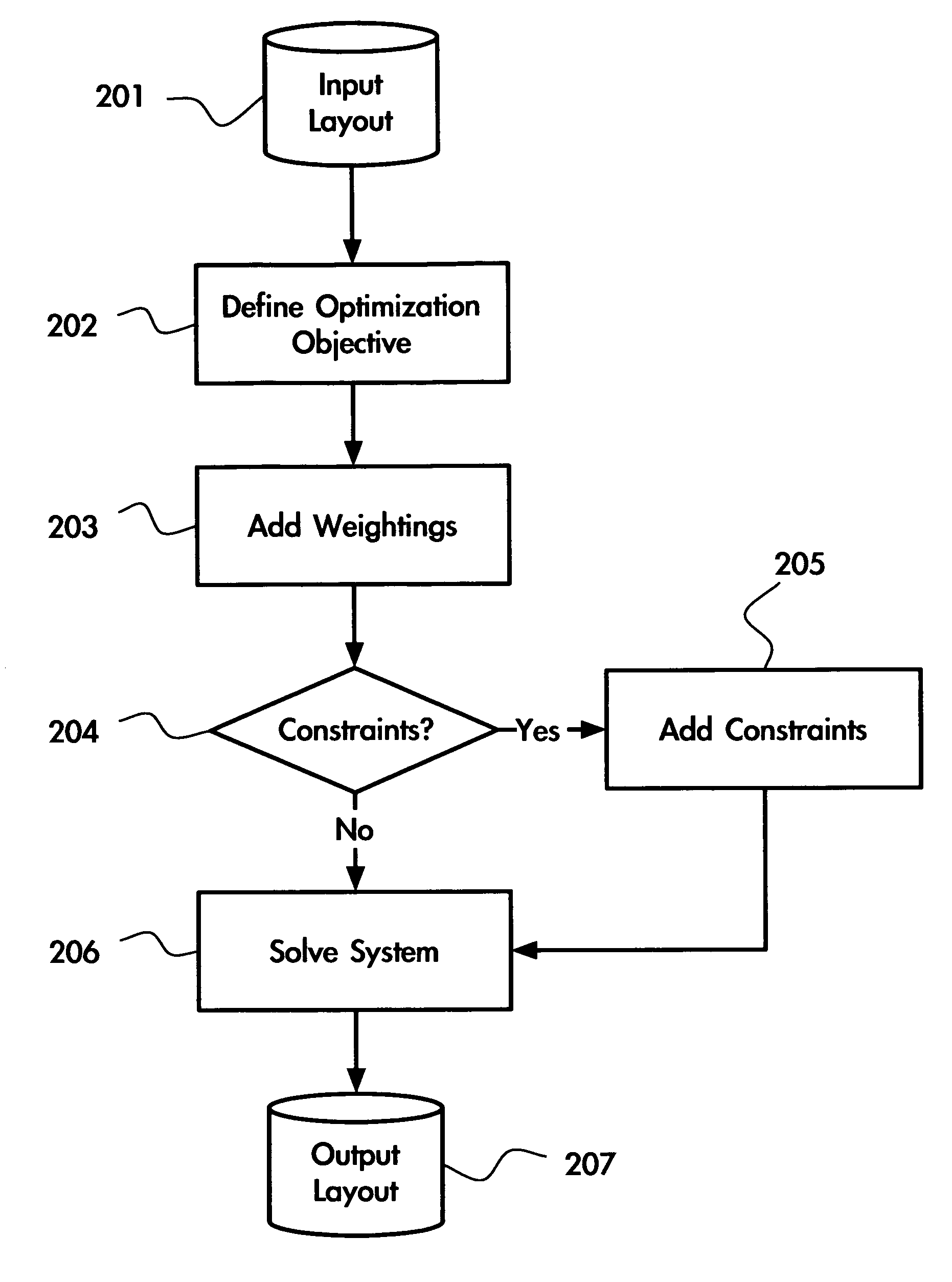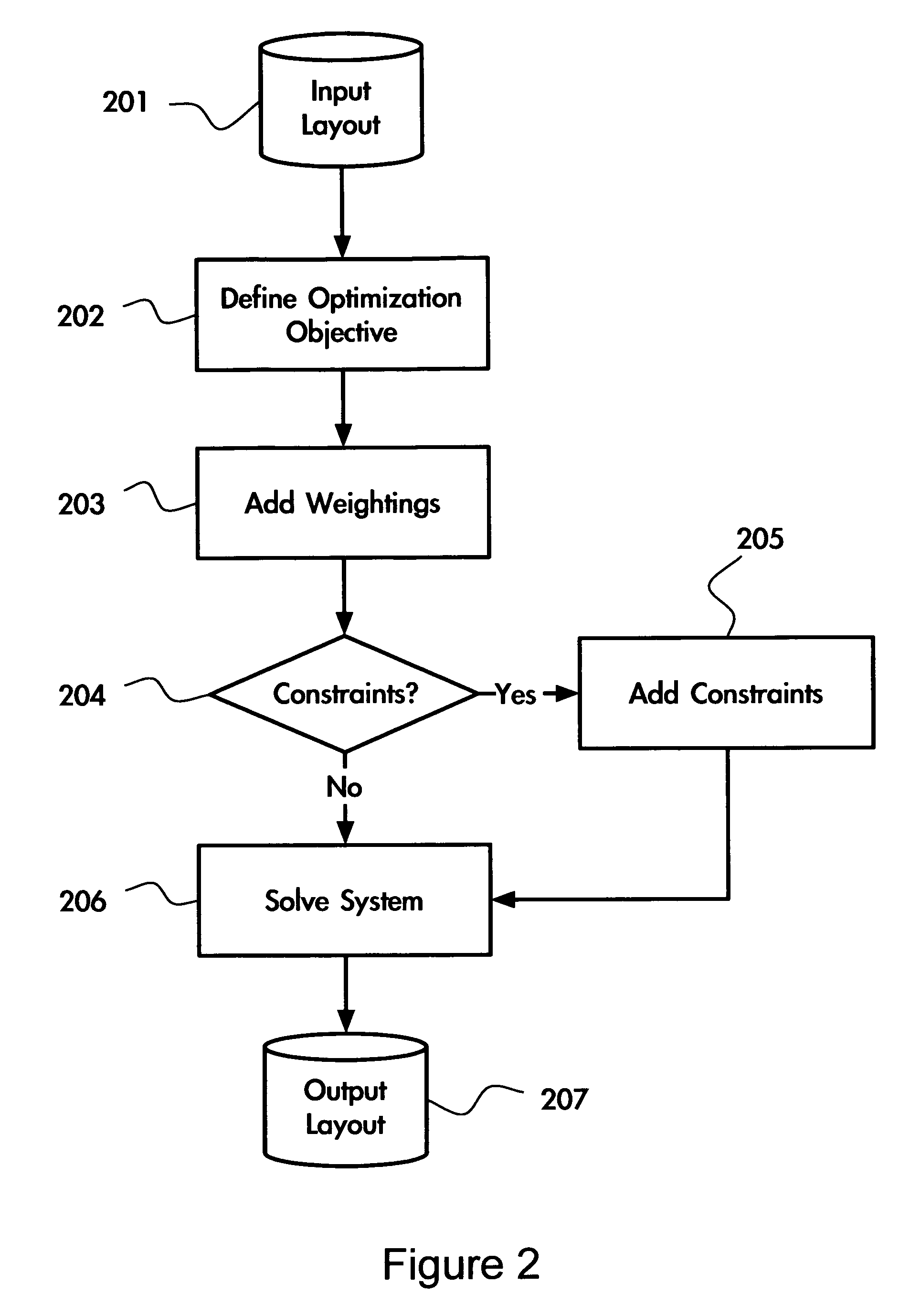Layout printability optimization method and system
a printability optimization and printability technology, applied in the field oflayout printability optimization methods, can solve the problems of reducing pattern tolerance, lithographic process becoming increasingly difficult, optical pattern transfer process approaching fundamental resolution limits, etc., and achieves the effect of improving manufacturability and yield
- Summary
- Abstract
- Description
- Claims
- Application Information
AI Technical Summary
Benefits of technology
Problems solved by technology
Method used
Image
Examples
Embodiment Construction
[0041]The layout printability optimization method and system, described in the present invention, may be applied to an IC physical layout data that is subsequently used in mask data preparation and generation processes. This optimization methodology is applicable to various resolution enhancement technologies (RETs) currently used in the state-of-the-art lithography. For example, this optimization methodology may be used for binary “chrome-on-glass” masks and phase shifting masks (i.e. attenuated, alternating-aperture). Moreover, this methodology is complimentary to sub-resolution assist feature (scattering bar) techniques, and may be applied to multiple exposure techniques based on layout decomposition. It is also contemplated that the optimization methodology and system described herein may take advantage of layout hierarchy information provided with the IC layout data, for faster and more efficient layout processing, and that the optimization methodology and system preserves the ...
PUM
 Login to View More
Login to View More Abstract
Description
Claims
Application Information
 Login to View More
Login to View More - R&D
- Intellectual Property
- Life Sciences
- Materials
- Tech Scout
- Unparalleled Data Quality
- Higher Quality Content
- 60% Fewer Hallucinations
Browse by: Latest US Patents, China's latest patents, Technical Efficacy Thesaurus, Application Domain, Technology Topic, Popular Technical Reports.
© 2025 PatSnap. All rights reserved.Legal|Privacy policy|Modern Slavery Act Transparency Statement|Sitemap|About US| Contact US: help@patsnap.com



